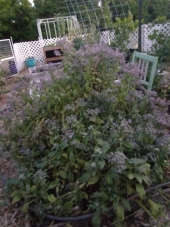




There are no experts, Just people with more experience.




Intermountain (Cascades and Coast range) oak savannah, 550 - 600 ft elevation. USDA zone 7a. Arid summers, soggy winters




Wild Edible & Medicinal Plant classes, & DVDs
Live in peace, walk in beauty, love one another.








My Grandparents always said, "plant the field corn when the oak leaves are the size of squirrel's ears.
There are no experts, Just people with more experience.








land and liberty at s.w.o.m.p.
www. swompenglish.wordpress.com




Life is too important to take seriously.








http://www.turkishbozshepherds.com
http://www.kunepigs.com/




It might have been this podcast where I learned to plant potatoes when the dandelions flower.
There are no experts, Just people with more experience.




The ultimate goal of farming is not the growing of crops, but the cultivation and perfection of human beings. - Masanobu Fukuoka




www.ellisfamilyokc.com
OKC Climate

|
please tap on glass. Tap harder. Keep tapping until this tiny ad jumps in your lap
The new gardening playing cards kickstarter is now live!
https://www.kickstarter.com/projects/paulwheaton/garden-cards
|




